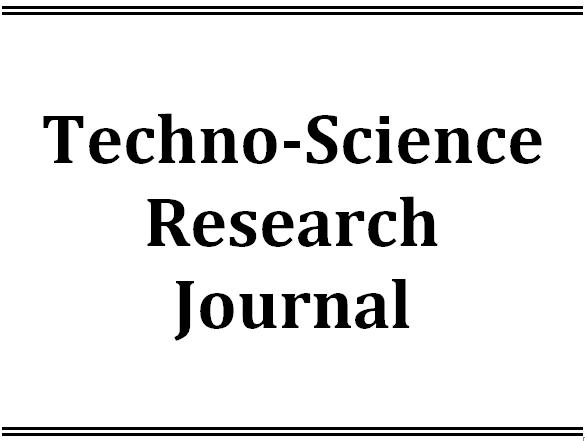Latest Issue
Empowering Education with Online Khmer Handwritten Text Recognition for Teaching and Learning Assistance
Published: August 30,2025Undergraduate Student Dropout Prediction with Class Balancing Techniques
Published: August 30,2025Status of Seawater Quality at Koh Rong Island, Sihanoukville, Cambodia
Published: August 30,2025Low-Complexity Detection of Primary Synchronization Signal for 5G New Radio Terrestrial Cellular System
Published: August 30,2025Word Spotting on Khmer Printed Documents
Published: August 30,2025Tuning Hyperparameters Learning Rate and Gamma in Gym Environment Inverted Pendulum
Published: August 30,2025Examining Passenger Loyalty in Phnom Penh Public Bus System: A Structural Equation Modelling Approach
Published: August 30,2025Prediction on Load model for future load profile of Electric Vehicle charging demand in Phnom Penh
Published: August 30,2025Economic Study on Integrating PV-DG with Grid-Tie: Case Study in Cambodia
Published: August 30,2025Drying Kinetic and the Changes of Physicochemical Properties and Bioactive Contents of Dried Tomatoes during Hot Air Drying
-
1. Faculty of Chemical and Food Engineering, Institute of Technology of Cambodia, Russian Federation Blvd., P.O. Box 86, Phnom Penh, Cambodia
Received: April 19,2022 / Revised: / Accepted: June 19,2022 / Available online: June 30,2022
Hot-air drying technique helps remove water content, prevents the quality of tomatoes from microbial growth, and extends their shelf life. Nevertheless, hot-air drying could affect dried products' nutritional value and physicochemical quality. Therefore, this study investigated the drying kinetics and the changes of physicochemical and bioactive compounds of local tomatoes (Cherry and Holland) during processing into dried tomatoes. To process the dried tomatoes, fresh tomatoes were pretreated with CaCl2 (0.5%) for 15h and submerged in a sugar solution containing citric acid and sodium metabisulphite. The pretreated samples were boiled for 1 hour and dried in a hot-air oven (50 °C) to reach a constant moisture level. The final moisture level of Cherry (11.75% w.b) and Holland (10.35 % w.b) were achieved with 1200 min and 1020 min drying times, respectively. During the drying process, the physicochemical properties of dried Cherry and Holland tomatoes were significantly different (p 0.05) between the control (fresh) and dried samples. The moisture content, water activity, and pH values were significantly decreased (p 0.05) with a longer drying time. Moreover, the value L* of a colour parameter that indicated lightness value also decreased. However, the a* and b* value was significantly increased (p 0.05) from fresh to dried samples. Both tomato samples' colour change (∆E) increased with drying time. At the same time, increasing drying time resulted in the total phenolic of Cherry and Holland being reduced from fresh to dried samples by factors of 4.73 and 4.59, respectively. The total flavonoid content in both tomato varieties decreased between fresh and dried samples within the first 200 min of drying time. For Cherry tomato, the flavonoid content decreased by 1.50 for fresh to dried samples and 1.38 for Holland tomato. The result of this study can help predict the moisture loss and desirable drying time to produce a dried tomato with good quality and maintain a high number of bioactive compounds in final products.

